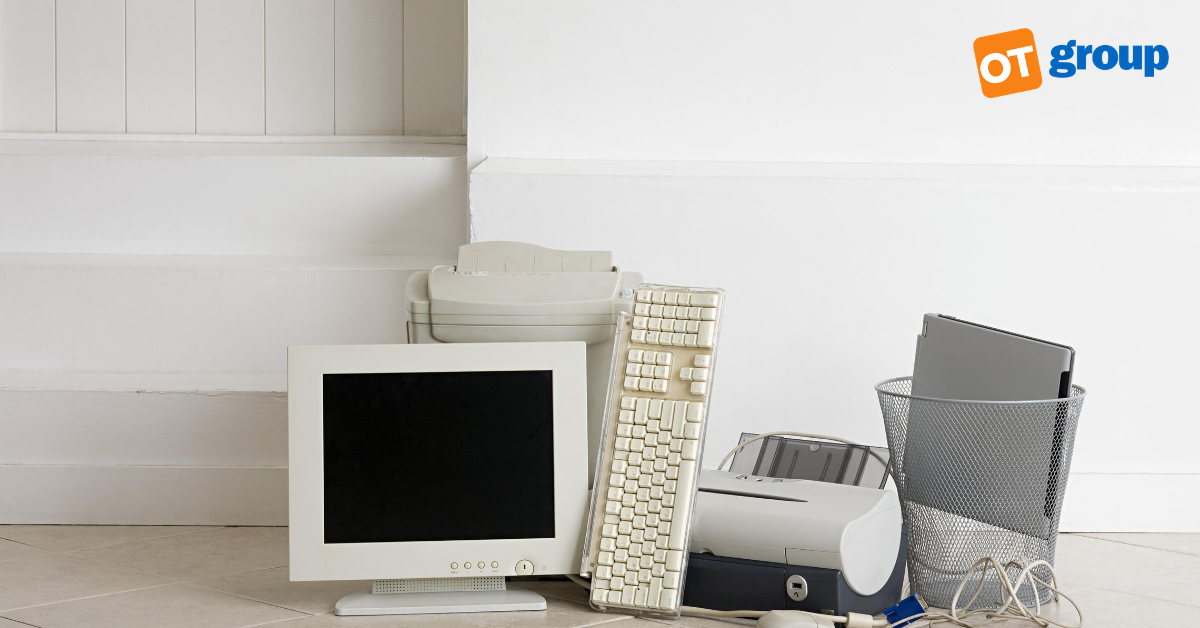Small to medium-sized businesses in Ontario operate in a highly competitive market. As a result, companies are continually looking for ways to cut down their expenses, improve their return on investment (ROI) and maintain a healthy bottom line. To make these operational savings, many organizations turn to their IT strategy and the hardware that supports it.
In a bid to save money, the majority of small to medium-sized businesses (SMBs) hang on to their computers for too long. They put up with the slower loading times and inefficient processes, without realizing that these drain time and money from their organization in hidden ways.
Research from Microsoft New Zealand found that most SMBs could make significant cost savings just by updating their PCs. Unfortunately, most continue to hang on to older computers.
What were the findings of the Microsoft study?
The study found that the optimal age of a PC is no more than four years old, beyond which the cost of repairs and lost productivity makes them cheaper for businesses to replace rather than trying to maintain or repair them.
It was found that older computers are more than twice as likely to experience issues like being slow to boot up, batteries depleting too soon, disk drive crashes causing data losses, application crashes and network connectivity problems.
Ultimately, the total cost of owning a PC that is four or more years old is enough to replace it with two or more newer models. Despite this, 70 percent of the SMBs surveyed in the research said that they use older PCs - with each one costing them at least $2,736 (US).
How does outdated hardware cost your business?
There are a number of ways that outdated hardware and legacy systems result in hidden costs and wasted time for your business, OT Group has listed just some of the key costs to your business here:
A drop in productivity
One of the biggest hidden costs associated with old hardware is lost productivity. A study from Techaisle, and reported on by Intel, found that an average of 42 productive work hours a year are lost while older computers are being repaired, versus 21 hours of annual repair time for PCs less than four years old - that’s twice as much downtime for older hardware.
That’s not even taking into account the time that is lost due to old hardware once it has started to lose its speed. Old computers have trouble running multiple applications at once, so the hardware begins to slow down and their processors, memory, disk drives and operating systems become outdated for newer software.
Slow workstations are estimated to drop employee productivity by 2.75 percent. That’s 13 minutes per day, or 5.5 days each year for every employee using an old system - that results in a huge amount of hidden wasted time and money.
It’s more expensive to repair than replace
The same Techaisle survey reported that 736 small businesses in six countries found that the cost to repair an older computer equals or even exceeds the cost of buying a new one. Small businesses are spending an average of $427 (US) on repair costs per computer that is four years or older, which is 1.3 times the repair cost for a computer that is less than four years old.
By replacing your computers before they start slowing down and needing repairs, not only will you avoid the costs of repairs that are no cheaper than buying a new computer, you will also avoid the productivity losses that come with older, slower computers.
It leaves you vulnerable to security issues
Updating your computers and hardware can greatly help your business combat security challenges. Newer models of hardware have modern security features and architecture that simply did not exist in older models.
Obsolescence can have damaging effects for your business, and not only puts an outdated system at risk, it puts everyone else on your company’s network at risk too. Old hardware creates vulnerabilities in your network that online criminals can take advantage of. New hardware, however, has modern security features that address these issues.
How hardware warranty can ensure your business avoids these hidden costs
Your hardware is the lifeblood of your business, and unexpected downtime or costly repairs can have a serious impact on your bottom line. Worrying about the hidden costs of your hardware, however, will only prevent you from focusing on the things that truly matter for your business.
That’s why your company should consider investing in a warranty program that protects both your new machines, as well as the older hardware that you have on your company’s network.
A good warranty coverage should give your business 24/7 protection for your essential technology infrastructure, reducing the risks associated with using out-of-warranty equipment in your business.
You will be able to continue to operate smoothly, no matter what happens to your hardware and increase the life expectancy of your fully-functional equipment.
Want to learn more about the hidden costs of outdated hardware, and how warranty coverage can protect you against those costs? Contact OT Group today. Our team of Ontario-based tech experts would love to help.




.png)

